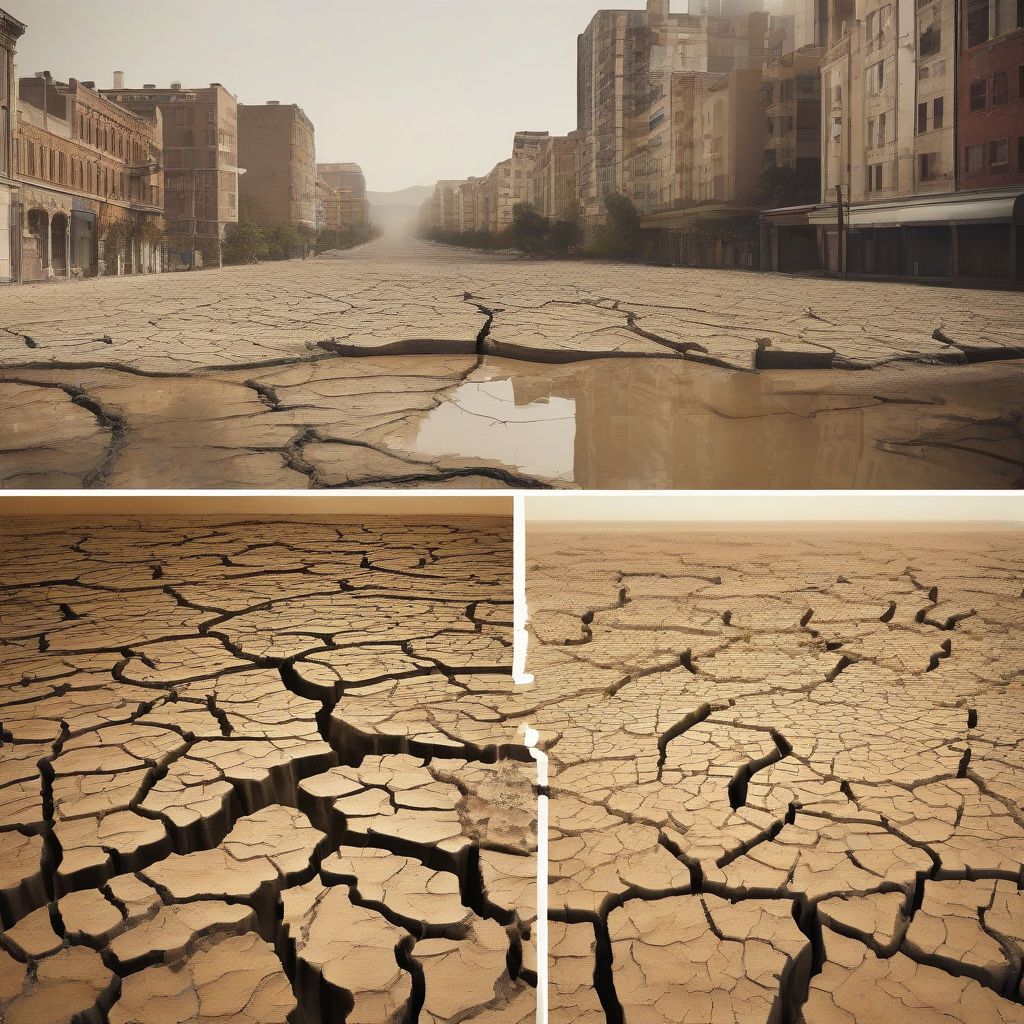Remember those perfect summer days of your childhood? Sun shining, gentle breeze, predictable rainfall? For many, those memories are increasingly contrasted by the realities of today’s extreme weather. From scorching heatwaves to devastating floods, our planet’s weather patterns are changing, and climate change is the driving force. But how exactly does this work? Let’s delve into the science behind this critical connection.
The Science Connecting Climate Change and Weather
The Earth’s climate system is a complex interplay of land, ocean, atmosphere, and ice. Climate change, driven primarily by human activities like burning fossil fuels, disrupts this delicate balance. The increased concentration of greenhouse gases, like carbon dioxide, traps more heat in the atmosphere, leading to a warming planet. This warming, in turn, fuels a cascade of changes in our weather patterns.
More Extreme Temperatures
A warmer atmosphere holds more moisture. This leads to more intense rainfall and increased risk of flooding in some regions. Conversely, other areas experience more prolonged and severe droughts as higher temperatures accelerate evaporation and dry out the land. Heatwaves become more frequent and intense, posing significant risks to human health and ecosystems.
 Extreme Temperatures
Extreme Temperatures
Shifting Weather Patterns
Climate change doesn’t just intensify existing weather patterns; it also shifts them. The jet stream, a band of strong winds high in the atmosphere that influences weather systems, can become more erratic due to warming in the Arctic. This can lead to prolonged periods of extreme weather, such as extended heatwaves or persistent cold snaps, in certain regions.
Increased Intensity of Natural Disasters
The warming planet fuels more powerful hurricanes and typhoons. Warmer ocean temperatures provide more energy for these storms, leading to higher wind speeds and increased rainfall. Similarly, wildfires become more frequent and intense due to drier vegetation and hotter temperatures. Rising sea levels, caused by melting glaciers and thermal expansion of water, exacerbate coastal flooding during storms and contribute to coastal erosion.
Understanding the Impact: Real-World Examples
The effects of climate change on weather patterns and natural disasters are no longer theoretical; they are being observed worldwide. The increased frequency and intensity of hurricanes in the Atlantic, the devastating wildfires in Australia and California, and the prolonged droughts in parts of Africa are just a few examples. These events displace communities, disrupt economies, and have devastating consequences for human lives and the environment.
Expert Insights
Dr. Michael Oppenheimer, a climate scientist at Princeton University, notes, “We are seeing the fingerprints of climate change on extreme weather events around the globe. The science is clear: the more we disrupt the climate, the more extreme and frequent these events will become.” His research highlights the urgent need to address climate change to mitigate these risks.
 Climate Change Impact
Climate Change Impact
What Can We Do?
While the challenge of climate change is significant, there is still hope. We can take individual and collective action to mitigate its effects and adapt to the changes already underway. Transitioning to renewable energy sources, improving energy efficiency, adopting sustainable land management practices, and investing in climate-resilient infrastructure are crucial steps.
Individual Actions Make a Difference
Even small changes in our daily lives can contribute to the solution. Reducing our carbon footprint by using public transport, choosing energy-efficient appliances, reducing meat consumption, and supporting sustainable businesses are all meaningful actions.
Adapting to a Changing Climate
Adaptation is also crucial. This involves preparing for the impacts of climate change that are already happening and those projected to occur in the future. Building seawalls, developing drought-resistant crops, and implementing early warning systems for extreme weather events are examples of adaptation strategies.
The Future of Our Planet
The future of our planet depends on our collective action. By understanding the science behind climate change and its impact on weather patterns and natural disasters, we can make informed decisions and take meaningful steps towards a more sustainable future. Let’s work together to protect our planet for future generations.
Conclusion
The connection between climate change and increasingly extreme weather is undeniable. From intensified heatwaves and droughts to more powerful hurricanes and wildfires, the evidence is clear. The changing climate is impacting our planet in profound ways, affecting not only weather patterns but also ecosystems, economies, and human lives. However, by understanding these complex interactions, we can take informed action. By embracing sustainable practices, investing in climate-resilient infrastructure, and advocating for climate-friendly policies, we can mitigate the risks and adapt to the changes already underway. The future of our planet depends on our collective commitment to addressing this global challenge. Let’s start a conversation in the comments below about what steps you are taking or plan to take to address climate change in your own life. Share this article with your friends and family to spread awareness and inspire action. Together, we can create a more sustainable future for generations to come.



